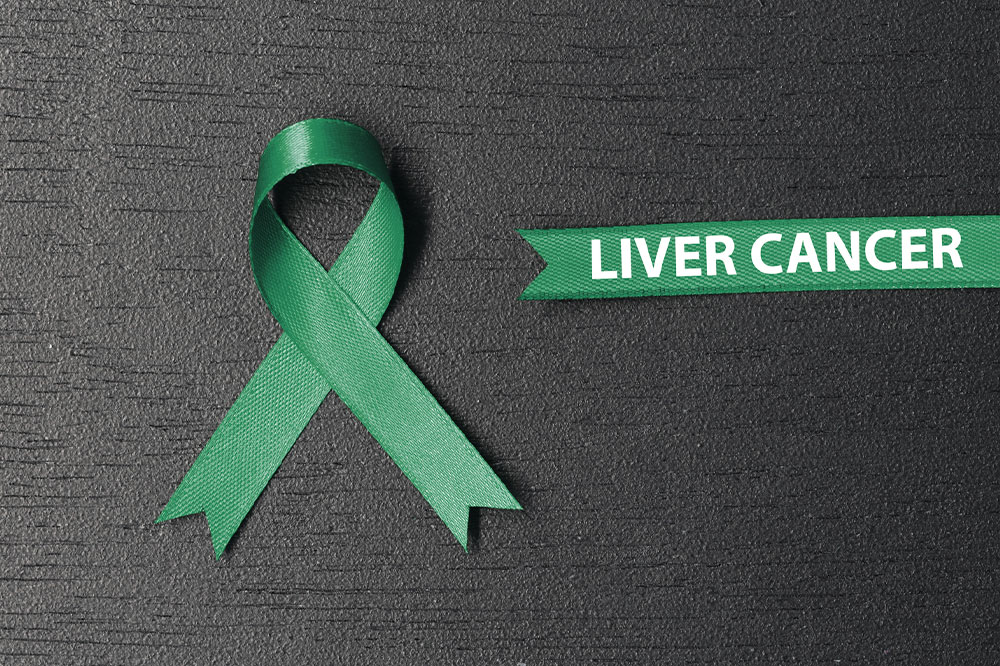Liver Cancer – Causes, Symptoms, and Therapies
One of the fastest cancer forms in which abnormal cells are formed in the tissues of the liver is known as liver cancer. There are two types of this cancer: primary and secondary; the former starts developing in one’s liver, while the latter can develop in another area of the body and migrate to the liver. Early diagnosis can help healthcare professionals treat primary liver cancer at an initial stage.

Types of primary liver cancer
Hepatocellular carcinoma (HCC)
Accounting for almost all occurrences of liver cancer; this is the most prevalent kind. More than 80% of primary liver cancer cases are that of HCC.
Cholangiocarcinoma
It is a kind of intrahepatic cancer (IHC), which is bile duct carcinoma in the liver. It accounts for around 10% of all primary liver cancer cases.
Angiosarcoma
Only 2% of all primary liver cancer cases are of this extremely rare form. The liver’s blood cell lining is where this malignancy first manifests itself. (Other organs may potentially be impacted by angiosarcoma.)
Liver cancer symptoms
Early primary cancer symptoms are typically absent in most patients. When they occur, the following symptoms and indicators may be present:
Shedding pounds without trying
Reduced appetite
Tight upper abdomen
Nausea and diarrhea
General lassitude and exhaustion
Stomach bloating
Discolored or yellow skin and the whites of one’s eyes (jaundice)
Chalky white stools
Some conditions linked to liver cancer
Hepatitis
Hepatitis B or C infection can badly damage one’s liver. Hepatitis is transmitted from person to person through contact with an infected person’s bodily fluids, such as blood or sperm.
Cirrhosis
Cirrhosis is a type of liver damage wherein scarred tissue replaces healthy tissue. A scarred liver cannot function normally and may eventually lead to complications such as liver cancer.
Diabetes type 2
Type 2 diabetes may significantly raise the risk of developing cancer, especially when combined with other risk factors.
How is liver cancer treated?
There are numerous therapy options for treating and managing cancer. When proposing a course of treatment, the doctor will take into account certain criteria. These factors include the quantity, size, and location of tumors in one’s liver; the health of one’s liver; the presence of cirrhosis; and whether the cancer has progressed to other organs.
Some treatments are as follows:
Partial liver removal
In order to remove a section of the liver, a partial hepatectomy is performed. Only liver cancer in its early stages is routinely treated with this operation. The healthy tissue that is still present will eventually grow back and fill in the gap.
Liver transplant
During a liver transplant, the entire liver is swapped out for a healthy liver from a reliable donor. If the cancer has not progressed to other organs, a transplant may be an option.
Ablation
Ablation includes destroying the cancer cells using heat, cold, or ethanol injections. Local anesthetic is frequently used during the procedure. In order to keep one from feeling pain, this numbs the area. People who do not need to undergo surgery may benefit from ablation.
Radiation treatment
High-energy radiation beams are used in radiation treatment to eliminate cancer cells. It may be transmitted either inside or externally through radiation. The radiation in external beam radiotherapy is directed at the areas of one’s body where cancer is present. Internal radiation entails injecting a tiny quantity of radioactive material into or close to the tumor.
Embolization
Procedures called embolizations are performed to cut off the blood flow to liver tumors. To partially block the hepatic artery, the doctor will inject microscopic particles. As a result, the tumor receives less blood supply. The portal vein, another blood channel, continues to supply nutrients to the healthy liver tissue.
Chemoembolization
Before inserting the blocking particles during chemoembolization, the doctor will administer chemotherapy treatment options into the hepatic artery. By doing this, they are delivered right to the tumor and blood circulation to the tumor is decreased by the obstruction.
Chemotherapy
Chemotherapy is a potent treatment that kills cancer cells. Typically, the treatment is given intravenously, or into a vein. One can receive chemotherapy as an outpatient procedure.
When other treatments are ineffective, chemotherapy may be employed. Side effects are frequent with chemotherapy since it affects all of the body’s cells, and not just the cancer cells.
One of the cancer forms with the greatest rate of growth in the country is primary liver cancer, a potentially fatal condition. The most common types of primary liver cancer are liver and bile duct carcinoma. The etiology, risk factors, symptoms, and therapies of these cancer types are similar. In order to diagnose and treat primary liver cancer as soon as possible, healthcare providers concentrate on identifying those who may be at elevated risk.